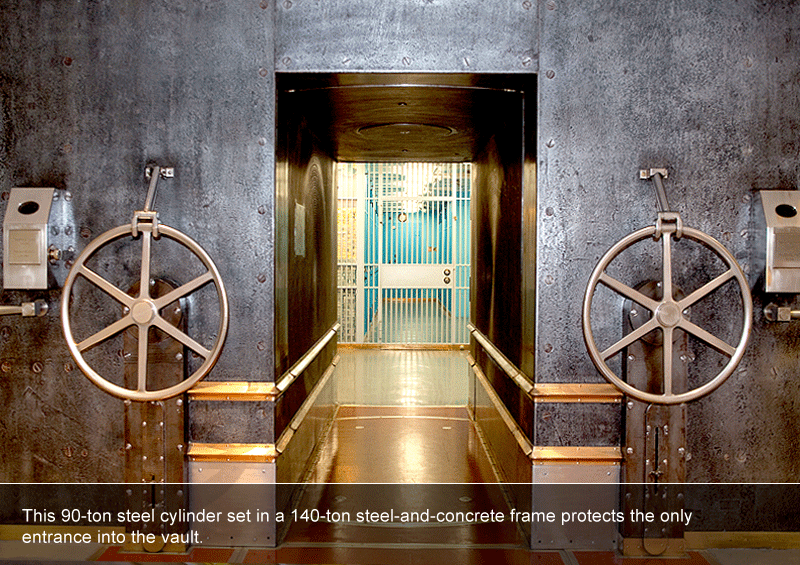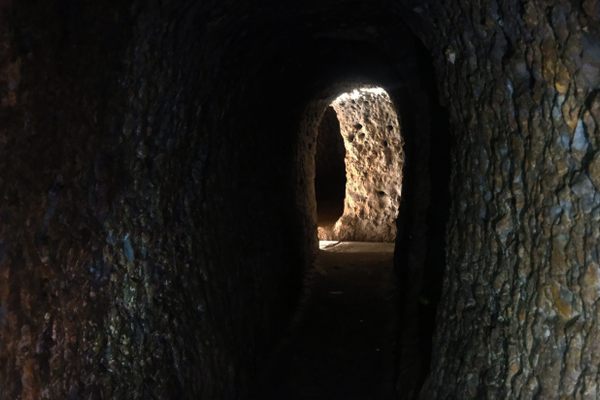About
The largest accumulation of gold in human history is located deep underneath the heart of Manhattan’s financial district, at the New York Federal Reserve Bank. Some 80 feet beneath sidewalk level, the Fed’s special vault is built into the bedrock and entrusted with deposits from central banks across the globe. Inside sits 7,000 tons of glittering gold bars—around 5 percent of all of the gold ever mined.
The only way into the vault is via a cylindrical entryway that rotates at the turn of a wheel. A sliver-shaped pie chunk of the cylinder has an opening, and when properly aligned with the entry hallway allows access to the treasure inside. Inside there are 122 separate mini-vaults (one for every country), plus a “library vault” for account holders with smaller deposits.
The Fed considers each gold bar to be non-fungible and unique because of variations in purity and weight. As a result, they carefully track each of the deposits, so if you give them a particular bar you can later retrieve that exact one.
The Fed’s gold vault doesn’t cater to millionaires and billionaires, though; its customers are sovereign nations. While the list of accountholders is a closely guarded secret, state-run banks like Bank of England, Banque de France, and Deutsche Bundesbank are likely clients. Foreign countries store their gold in New York because it’s a convenient and central location. One of the perks of a central deposit location is that countries can transfer gold amongst themselves by simply ordering bars to be transferred from one compartment to another at a modest handling cost of $2 per bar.
Perhaps the most amazing thing about the New York Federal gold vault is that it offers public tours (although they are only available to school groups and student programs). Still, that’s remarkable considering the security at similar facilities like the Gold Bullion Depository at Fort Knox, which “bars” the likes of reporters, members of Congress, and even former presidents.
Related Tags
Know Before You Go
Fulton street Station on the 2,3 or 4,5 Trains. The tour is free.
Published
February 28, 2012



























